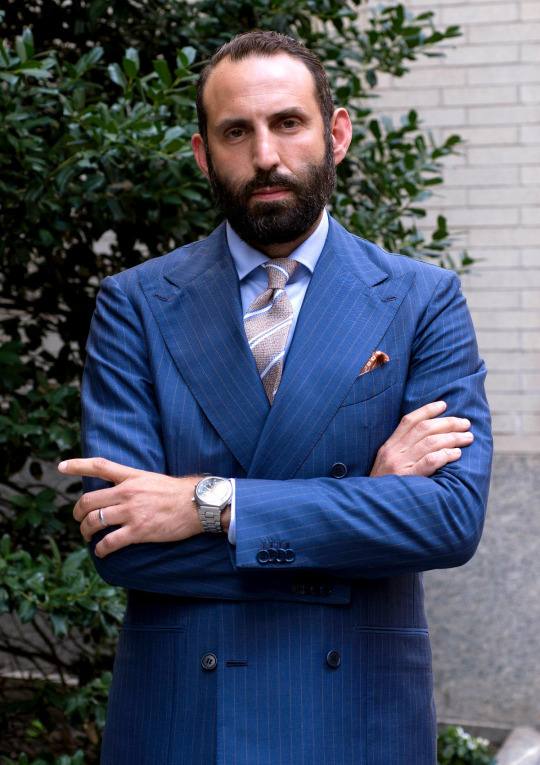
Even if they’re both into style, the online communities for men’s clothing and fine horology exist on different islands. Guys who are into suits and Japanese workwear are often not that up on watches. And guys who are into watches are not always interested in clothes. These communities speak different languages, and have different standards for what makes something good.
If you’re on this side of the divide – the one that’s more interested in menswear than mechanical movements – finding the right watch can be a challenge. For one, prices are dizzying. While you can get partially canvassed suits nowadays for $500, and full-grain leather shoes for half that amount, the ticket price for an entry-level, quality watch usually starts in the low four-figures – collector’s pieces are five-figures. That can make experimentation prohibitively expensive. Secondly, if you’re concerned about how to find a watch that actually complements the rest of your wardrobe, you have to learn a new visual language. Which watches go with suits, which go with workwear, and which go with contemporary menswear?
I recently chatted with Greg Lellouche, co-founder of No Man Walks Alone (a sponsor on this site, although this isn’t a sponsored post) about how to find the right watch for any given wardrobe. Greg has been an avid watch collector since the late 1990s, when he bought his first one, the Sinn 142 ST you see him wearing above. Since then, he’s collected everything from vintage Rolexes to Speedmasters to Reversos. When he worked on Wall Street, Greg’s coworkers used to turn to him for advice when they were looking to buy a new wristwatch with their annual bonus.
I’ve always admired Greg’s sense of taste. He has a sharp and discriminating eye, but also an open mind. You see this reflected in his shop, where he carries everything from Abasi Rosborough to Sartoria Formosa. Given his eclectic interests, I figured he’d be a good person to talk to about finding the right timepiece for different wardrobes – spanning everything from contemporary to workwear, classic casualwear to tailoring. Hopefully you can find something here that suits your style.


Contemporary
We started with the most difficult category: contemporary. Designers such as Stephen Schneider and Robert Geller bring a fresh perspective to menswear. Their collections draw from classic tailoring and militaria, but they’re brimming with modern details, such as reinvented collars, uniquely textured knits, and enzyme washed materials. They’re a bit more forward facing than other styles on this list, with no obvious counterparts in the watch making world.
For these wardrobes, Greg has three suggestions. The first are what he calls “heritage timepieces” – watches that could pass for family heirlooms. “People have different definitions for vintage,” he says. “Someone could call what I wore in college vintage, but these are a bit older than that.” A heritage timepiece is something that has a smaller dial, a leather strap, and usually a time-only or time-and-date-only function. Greg suggests things such as vintage Omegas or Rolex bubblebacks (Rolex’s Datejust, he notes, is already getting into business casual territory). “It should look like something you inherited from your grandfather.” And since they look like family heirlooms, they can be worn with anything in this post.
Alternatively, you can go with something that makes a modern design statement, such as an inexpensive G-Shock (I would add Swatch and Casio World Time to Greg’s list). Those have a younger and more detached sensibility when you compare them to luxury watchmakers such as A. Lange & Söhne. The fact that G-Shock has done so many collaborations with forward-facing designers, such as Maison Margiela and Margaret Howell, is a testament to how comfortably they sit in this space.
Lastly, Greg suggests black dial, sport watches, such as a pilot watch from IWC’s Mark series. These feel sleek and modern, but are also rooted in enough history to make them classic timepieces. The IWC Mark XV pictured above, for example, can be worn with an oversized Geller bomber jacket without feeling like cosplay, but it also works well with a modern topcoat and some jeans.

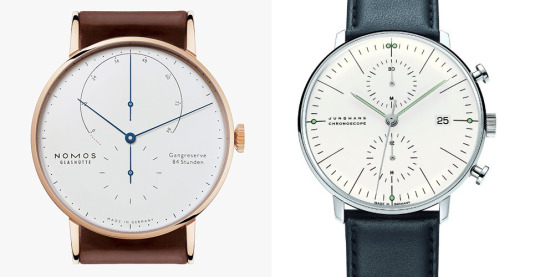
Minimalism
Minimalism circles somewhere in the orbit of contemporary men’s design, but it’s distinctive enough to warrant its own category. It includes everything from the austerity of Helmut Lang to the deconstructed experimentations of Maison Margiela. It’s about Scandinavian design and upgraded basics. It’s the expressive silhouette of Lemaire and pared-down staples of Uniqlo and COS.
Minimalism isn’t just about simple clothes, however. It’s more defined by its reaction to what came before it. Much like the original minimalist art movement that started in New York City in the 1950s – what some call ABC art, object art, or primary structures – minimalism in fashion is about taking a breather from overly expressive designs. In art, minimalism was a reaction against abstract expressionism (e.g. painters such as Jackson Pollock, who threw paint onto his canvases with explosive emotion). Similarly, Helmut Lang and Jil Sander came after the power shows of the ‘80s and peacocking of the ‘70s, just as minimalism today feels fresh again after years of seeing Pitti Uomo dandies and overly engineered garments.
For a more pared down wardrobe, Greg suggests all the same watches mentioned in the previous category, but he would add what he calls “architectural timepieces.” These include things such as NOMOS and Junghan’s Max Bill, which have clean, deliberate lines and a mid-century, wall-clock aesthetic. “They’d go well with all-white sneakers, tailored trousers, and a textured sweater,” he says. These same watches can be worn with suits and sport coats, bringing them from the work week to weekend.

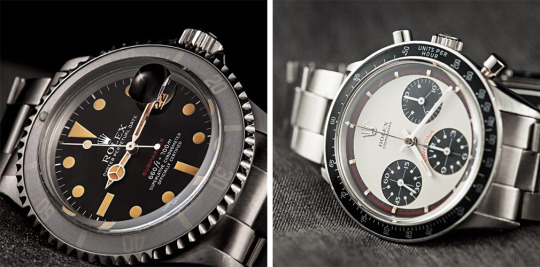
Heavy Denim and Workwear
Here we have my favorite category on a blog called Die, Workwear – workwear. If you’re looking for a watch that pairs well with chore coats and double riders, jeans and fatigues, heavy work boots and Maine hunting shoes, Greg suggests a tool watch.
“When you see Japanese guys who are into workwear, including the designers behind some of these Japanese brands, many of them are obsessed with vintage Rolex Submariners,” says Greg. “But almost any rugged tool watch here can work – a Sea Dweller, a Speedmaster, or if you want to push your budget, a Daytona. These watches have a utilitarian vibe that makes them go naturally with utilitarian clothes.”
Shopping for a vintage Rolex can send you down a rabbit hole. Models such as the Submariner and Daytona are differentiable by a million tiny details, which can make a particular watch more or less collectible. Unless you have strong feelings about these things, Greg recommend shopping with your eye. For example, he likes Submariners with or without a cyclops (which is to say, the magnifying date window), but prefers vintage versions with Tritium dials over modern ones. Tritium is a luminescent material that Rolex once used to paint their watch hands and hour markers, but they’ve since moved on to Luminova. Vintage Tritium dials, however, have creamy, slightly-yellowed details. “I just think they look better,” he says. Of all the watches he’s owned over the years, his Rolex 5513 Submariner is still one of the ones he wears most.
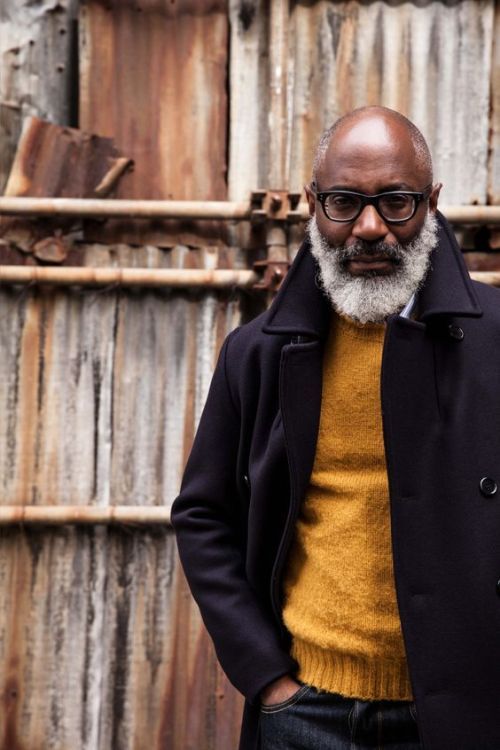

Classic Casualwear
Classic casualwear sits somewhere between contemporary and true workwear. The clothes draw from military and hunting histories, but they don’t take forever to break in. They’re about spongy Shetland sweaters, waxed cotton field jackets, and sleeker cap toe boots. This is the stuff of Brooks Brothers, Ralph Lauren, Drake’s, Inis Meain, and Anderson & Sheppard’s ready-to-wear line. They’re weekend clothes for men who either normally wear a coat-and-tie or simply enjoy that sensibility.
Just as these lines are dialed back from true workwear, Greg suggests tool watches that aren’t overly rugged. “A classic pilot watch, such as an IWC Flieger, is a great in-between,” he says. “It’s not as chunky as a Sea Dweller or Panerai, but it’s more casual than a Lange or Vacheron.” These are the kind of watches you can wear with shawl collar cardigans and oxford button-downs, or peacoats and slim-straight jeans.
Greg’s Sinn 142, which is what got him into collecting watches in the first place, also sits comfortably in this space. It’s an aerospace chronograph that German astronaut Reinhard Furrer wore during his mission in 1985. “I love that Sinn feels like the same line for the last thirty years,” Greg says. “Some of their pilot and dive watches are exactly the same as they were thirty years ago, and the designs are just right. Of all the companies that make tool watches, they’re one of the few that actually supply emergency services and military departments, so they come with some great provenance.”

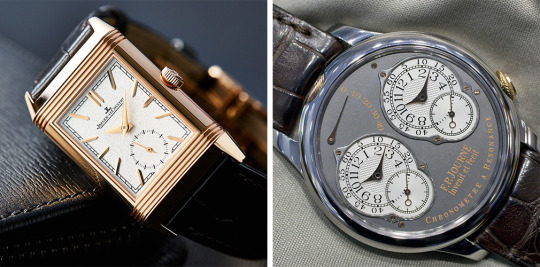
Suits and Sport Coats
Finally, for suits and sport coats, Greg is a bit more liberal than most. Some consider a true dress watch to be the only option for suits, then something more casual for a sport coat outfit. But Greg has never been a fan of expensive time-only pieces. “If you’re wearing a formal outfit, you may want a very simple dial with just two or three hands – something without a moonphase, power reserve, or other complications,” he says. “But to be honest, I find those kinds of watches to be very boring. I’ve never been excited to see a simple Lange. It’s just not my thing.”
Instead, Greg favors the Reverso, which he considers to be one of the most iconic dress watch designs of all time. “It’s just perfect,” he says. “I like the modern size, not the ones that are extra small or long. But it’s a nice change from simple round faces.” Additionally, he recommends anything from Jaeger-LeCoultre’s Master series. “It’s hard to go wrong with any of those models if you’re wearing a coat-and-tie. Plus, they come in steel, which makes them much more affordable than precious metal timepieces.”
For the one that got away, Greg’s voice turns wistful when he talks about F.P. Journe’s Résonance. “That’s the one I should have bought,” he says. The Résonance is a highly complicated, almost steam-punk looking watch. It has two balance wheels, each set extremely close to each other so that they beat in resonance. The idea is that, if one falls out of sync, the other pulls it back to the proper rate, allowing the watch to keep better time and eliminate deviation. Or, at least, that’s the theory. “It never works like it’s supposed to,” Greg admits. “But that’s also part of the charm. It’s also too busy looking to be a true dress watch, but if I owned one, I’d wear it all day, every day.”
When it comes to finding the right watch for your wardrobe, Greg has a practical, rule-aware but not rule-bound approach. “Just use your eye. Sometimes things can look out of place and seem cool; sometimes things can look out of place and seem dorky. It’s like with any accessory – you know when something is off in a bad way. Before you head out for the day, just have one last look in the mirror to make sure things look right.”
